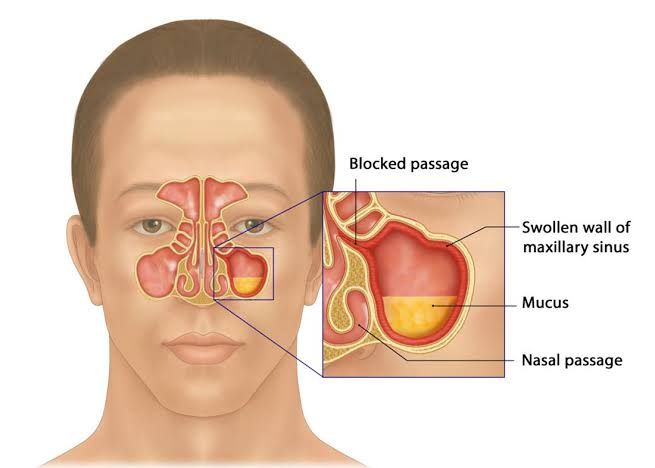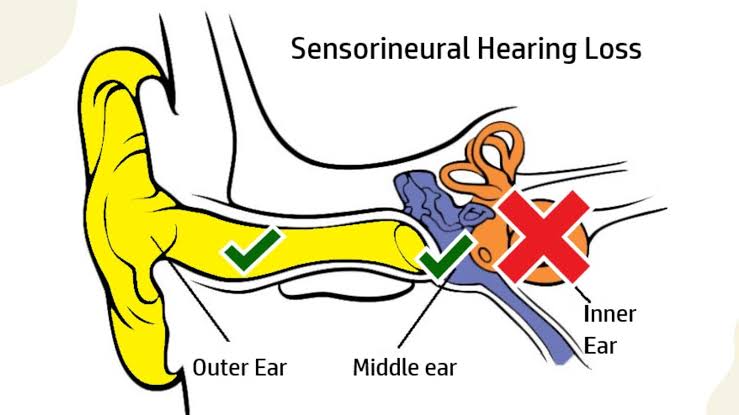
Definition of Rhinosinusitis
Rhinosinusitis is defined as the inflammation of the mucous membranes of the nasal passages and sinus cavities. This condition is commonly referred to as sinusitis, but the term rhinosinusitis is more accurate because it encompasses both the nose (rhino) and the sinuses, which are interconnected structures that can be affected by similar disease processes. Rhinosinusitis can occur due to various factors, including infections (viral or bacterial), allergies, and anatomical issues such as nasal polyps or a deviated septum.
Classifications of Rhinosinusitis
Rhinosinusitis is classified into four main categories based on the duration of symptoms:
- Acute Rhinosinusitis: Symptoms last less than four weeks. This type often follows an upper respiratory tract infection and is primarily viral in origin. Most patients recover without medical intervention within five to seven days.
- Subacute Rhinosinusitis: Symptoms persist for more than four weeks but less than 12 weeks. This condition represents a low-grade continuum of acute infection.
- Chronic Rhinosinusitis: Symptoms last longer than 12 weeks and may be associated with underlying conditions such as allergies or anatomical abnormalities. Chronic rhinosinusitis can lead to significant morbidity if not treated effectively.
- Recurrent Acute Rhinosinusitis: Defined as having four or more episodes of acute rhinosinusitis within a 12-month period, with complete resolution of symptoms between episodes.
These classifications help healthcare providers determine appropriate treatment strategies based on symptom duration and severity.
Causes and Predisposing Factors for Rhinosinusitis
Understanding the causes and predisposing factors for rhinosinusitis is crucial for effective management and prevention.
The primary causes of rhinosinusitis include:
- Infections: Both viral and bacterial infections are significant contributors to acute RS. Viral upper respiratory infections can lead to secondary bacterial infections that exacerbate sinus inflammation.
- Allergic Reactions: Allergic rhinitis is a common predisposing factor that can lead to inflammation of the nasal passages, contributing to the development of RS.
- Anatomical Abnormalities: Structural issues such as deviated septum or nasal polyps can obstruct sinus drainage pathways, increasing the risk of infection.
- Environmental Factors: Exposure to pollutants, smoke, and allergens can irritate the nasal mucosa and contribute to inflammation.
Predisposing Factors for Chronic and Recurrent Rhinosinusitis
Several factors have been identified as predisposing individuals to chronic and recurrent forms of rhinosinusitis:
- Age: Patients with chronic or recurrent RS tend to be older compared to those with acute forms. This suggests that age-related changes in immune response may play a role.
- Allergic Conditions: A higher prevalence of allergic rhinitis, atopy (a genetic tendency to develop allergic diseases), and asthma has been observed in patients with chronic or recurrent RS. These conditions are linked through inflammatory pathways that affect sinus health.
- Familial History of Allergies: A family history of allergic diseases increases susceptibility due to shared genetic predispositions.
- Daycare Attendance: Children who attend daycare centers are often exposed to more pathogens, which may increase their risk for upper respiratory infections leading to RS.
- Immunodeficiency Disorders: Individuals with weakened immune systems are at greater risk for developing infections that can lead to chronic sinus issues.
- Ciliary Dysfunction: Conditions affecting ciliary function (the tiny hair-like structures that help clear mucus from the sinuses) can impair drainage and promote infection.
- Gastroesophageal Reflux Disease (GERD): GERD may contribute indirectly by causing postnasal drip, which irritates the nasal passages and sinuses.
Diagnosis of Rhinosinusitis
The diagnosis of rhinosinusitis involves a systematic approach that includes patient history, symptom assessment, and a limited physical examination. Here’s how healthcare professionals typically diagnose this condition:
1. Patient History:
- The clinician begins by taking a detailed medical history from the patient. This includes asking about the onset and duration of symptoms, previous episodes of sinusitis, and any associated factors such as allergies or recent upper respiratory infections.
- Key symptoms to inquire about include nasal congestion, facial pain or pressure, purulent nasal discharge (thick yellow or green mucus), fever, and loss of smell.
2. Symptom Classification:
- Symptoms are categorized into major and minor criteria to help establish the diagnosis:
- Major Symptoms: These include facial pain/pressure, nasal obstruction/congestion, purulent nasal discharge, and reduced or lost sense of smell.
- Minor Symptoms: These may include headache, ear pain/fullness, halitosis (bad breath), dental pain, cough, fatigue, and fever.
- A diagnosis can be made based on specific combinations of these symptoms.
3. Physical Examination:
- A limited physical examination is performed to look for signs indicative of rhinosinusitis. This may involve anterior rhinoscopy to visualize the nasal passages for signs of inflammation or purulent discharge.
- The presence of nasal polyps or other anatomical abnormalities may also be assessed during this examination.
4. Duration of Symptoms:
- The duration of symptoms is critical in differentiating between types of rhinosinusitis:
- Acute Rhinosinusitis: Symptoms last less than 4 weeks.
- Subacute Rhinosinusitis: Symptoms persist for 4 to 12 weeks.
- Chronic Rhinosinusitis: Symptoms last more than 12 weeks.
5. Diagnostic Criteria:
- According to established guidelines from organizations like the American Academy of Otolaryngology–Head and Neck Surgery, specific diagnostic criteria must be met for each subtype:
- For acute bacterial rhinosinusitis (ABRS), symptoms typically worsen after an initial improvement or persist beyond 10 days without improvement.
- Chronic rhinosinusitis requires evidence of inflammation lasting over 12 weeks with either two major symptoms or one major plus two minor symptoms.
6. Additional Testing:
- In most cases, further testing such as imaging studies (like CT scans) or cultures is not necessary unless there is a failure to respond to treatment or complications arise (e.g., spread of infection).
- Nasal endoscopy may be performed in cases where chronic rhinosinusitis is suspected or when surgical intervention is being considered.
In summary, diagnosing rhinosinusitis relies heavily on patient-reported symptoms combined with a focused physical examination. The classification into acute versus chronic forms helps guide treatment decisions effectively.
When to Investigate in Patients with Rhinosinusitis
In the management of rhinosinusitis, most patients can be effectively treated based on a thorough history and limited physical examination. However, there are specific circumstances under which further investigation is warranted. The decision to investigate typically hinges on the patient’s response to initial treatment, the duration and severity of symptoms, and any concerning clinical findings.
1. Failure to Respond to Initial Therapy
If a patient with acute or recurrent acute rhinosinusitis does not show improvement after an appropriate course of antibiotic therapy (typically lasting seven to 14 days), further investigation is necessary. This lack of response may indicate complications such as the presence of resistant bacteria or an alternative diagnosis that mimics rhinosinusitis.
2. Duration of Symptoms
For patients with symptoms persisting beyond 10 days without improvement, or those whose symptoms worsen after an initial period of improvement (often referred to as “double worsening”), further evaluation is indicated. This could suggest a bacterial infection rather than a viral one, necessitating more detailed diagnostic measures.
3. Spread of Infection
If there are signs that the infection has spread beyond the sinuses—such as orbital cellulitis (inflammation around the eye) or meningitis (inflammation of the protective membranes covering the brain and spinal cord)—immediate investigation is critical. Imaging studies like computed tomography (CT) scans may be required to assess for complications such as abscess formation or other serious conditions.
4. Chronic Symptoms
Patients exhibiting chronic rhinosinusitis symptoms lasting 12 weeks or longer should undergo further evaluation. This includes potential imaging studies and possibly nasal endoscopy to assess for anatomical abnormalities, polyps, or other underlying conditions that could contribute to persistent symptoms.
5. Suspected Underlying Conditions
Investigation is also warranted in cases where there are indications of underlying conditions such as cystic fibrosis, immune deficiencies, or mucociliary disorders. In these instances, laboratory tests may be necessary alongside imaging studies.
6. Surgical Considerations
In cases where surgery is being considered—such as for patients with recurrent infections not resolved by medical therapy—nasal endoscopy and CT scans become essential tools for evaluating sinus anatomy and pathology.
In summary, investigations in patients with rhinosinusitis are primarily indicated when there is a failure to respond to treatment, prolonged duration of symptoms without improvement, evidence of complications from infection spread, chronicity of symptoms exceeding 12 weeks, suspected underlying health issues, or when surgical intervention may be necessary.
Management of Acute and Chronic Rhinosinusitis
1. Management of Acute Rhinosinusitis
Acute rhinosinusitis (ARS) is typically defined as inflammation of the nasal passages and paranasal sinuses lasting less than four weeks. The management strategies include:
- Symptomatic Treatment:
- Analgesics: Over-the-counter pain relievers such as ibuprofen or acetaminophen can help alleviate pain.
- Decongestants: Oral or topical decongestants (e.g., pseudoephedrine, oxymetazoline) can reduce nasal congestion but should not be used for more than three days to avoid rebound congestion.
- Nasal Saline Irrigation: Saline sprays or rinses can help clear mucus and allergens from the nasal passages.
- Antibiotic Therapy:
- Antibiotics are indicated if bacterial infection is suspected, particularly if symptoms persist beyond 10 days or worsen after initial improvement. Common choices include amoxicillin or amoxicillin-clavulanate.
- Corticosteroids:
- Intranasal corticosteroids (e.g., fluticasone, mometasone) may be used to reduce inflammation, especially in patients with significant nasal obstruction.
- Observation:
- In many cases, especially viral infections, supportive care without antibiotics is appropriate, as ARS often resolves spontaneously.
2. Management of Chronic Rhinosinusitis
Chronic rhinosinusitis (CRS) is characterized by symptoms lasting longer than 12 weeks. Management strategies are more complex and may include:
- Medical Management:
- Intranasal Corticosteroids: These are the cornerstone of treatment for reducing inflammation.
- Saline Irrigation: Regular use of saline irrigation helps maintain sinus drainage and reduces symptoms.
- Antibiotics: A prolonged course of antibiotics may be warranted in cases where bacterial infection is suspected or confirmed.
- Management of Underlying Conditions:
- Conditions such as allergies, asthma, or gastroesophageal reflux disease (GERD) should be managed concurrently to improve CRS outcomes.
- Surgery:
- If medical management fails after an adequate trial (typically at least three months), functional endoscopic sinus surgery (FESS) may be considered to improve sinus drainage and remove obstructive tissue.
- Biologics:
- For patients with severe CRS with nasal polyps, biologic therapies targeting specific inflammatory pathways (e.g., dupilumab) have shown efficacy.
Complications of Rhinosinusitis and Their Management
Complications from both acute and chronic rhinosinusitis can arise due to the spread of infection or prolonged inflammation. Notable complications include:
- Orbital Complications
- Intracranial Complications
- These can manifest as meningitis, brain abscesses, or cavernous sinus thrombosis.
- Immediate hospitalization is necessary; management includes intravenous antibiotics and possibly surgical intervention for drainage.
- Osteomyelitis
- Infection can spread to the bones surrounding the sinuses.
- Diagnosis typically requires imaging studies like CT scans; treatment involves prolonged antibiotic therapy and sometimes surgery to debride infected bone tissue.
- Chronic Respiratory Issues
- Patients may develop asthma exacerbations due to ongoing inflammation.
- Management focuses on controlling underlying respiratory conditions through inhalers and other medications while addressing sinus issues.
- Nasal Polyps
- Chronic inflammation can lead to polyp formation which contributes to airway obstruction.
- Treatment options include intranasal corticosteroids for smaller polyps; larger polyps may require surgical removal.
In summary, effective management of acute and chronic rhinosinusitis involves a combination of symptomatic relief, medical therapy targeting underlying causes, potential surgical interventions for complications, and ongoing monitoring for recurrence or new complications.







